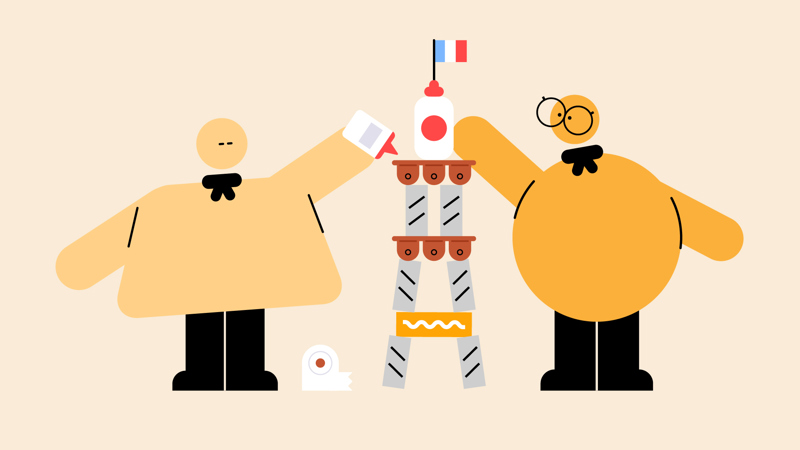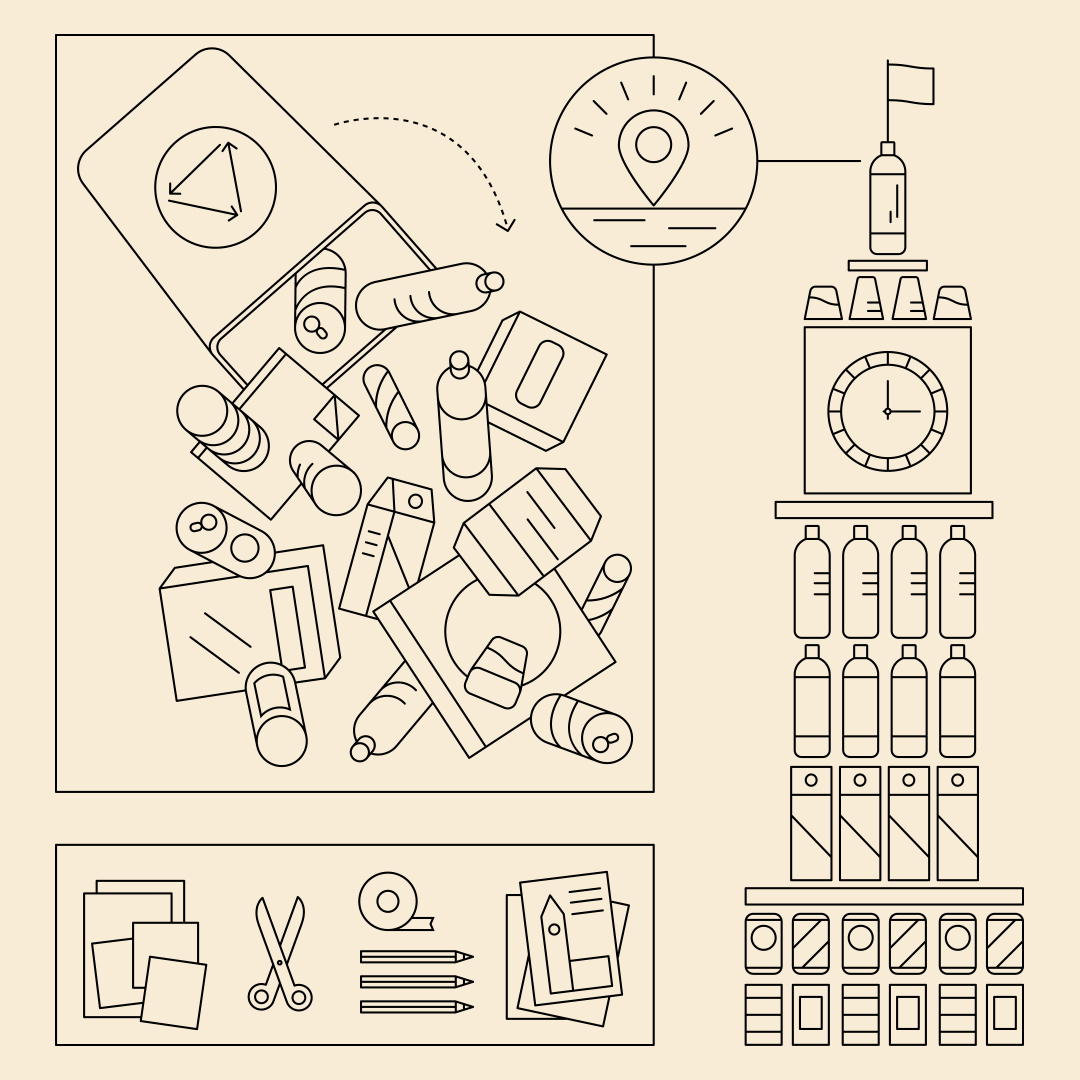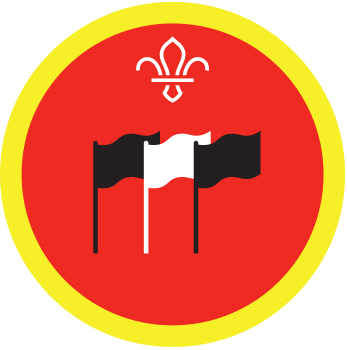
One person’s rubbish is another person’s landmark
You’ll need
- Clean items of recycling
- Sticky tape
- Masking tape
- Sticky tack
- String
- Scissors
- Scrap paper
- Coloured pens or pencils
- Free brochures from a travel agent (or images of landmarks)

Before you begin
- Use the safety checklist to help you plan and risk assess your activity. Additional help to carry out your risk assessment, including examples can be found here. Don’t forget to make sure all young people and adults involved in the activity know how to take part safely.
- Make sure you’ll have enough adult helpers. You may need some parents and carers to help if you’re short on helpers.
Running this activity
- Everyone will need their own recycling, sticky tape, scissors, and scrap paper. Give people plenty of notice so they have time to collect the recycling.
- It’s also useful to some facts about recycling and different landmarks, as well as some pictures of landmarks for inspiration. People could do some research before the session, too.
Build your landmarks
- Ask everyone to put any dry recycling on a table at your meeting place. It could be shared out between everyone or people could use what they brought.
- Gather everyone together in a circle.
- People could work individually, in pairs or in small groups.
- Everyone should choose a landmark from another country. It could be another country inside the UK (England, Scotland, Wales, or Northern Ireland), or a country outside the UK.
- When the person leading the activity says ‘go’, everyone should use the recycling, sticky tape, other craft resources and scissors to recreate their landmark.
- Once everyone’s finished their landmark, they should take some sticky notes or scraps of paper. They need to write some facts about their chosen country’s currency, language, national dress, culture and customs. They can use their books or brochures, as well as anything they may already know. They should stick these facts to their model.
- Groups should take it in turns to show their finished model off. Everyone else should guess the landmark the model’s based on and the country it represents.
- Once everyone’s guessed, people should break down their models and remove the sticky tape, so that the items can be recycled.
- Once everyone has guessed, everyone should break down their models and remove the sticky tape, so that items can be recycled.
Reflection
This activity reminded everyone that they’re a local, national, and international citizen.
What did people find out about the world? What would they ask someone from their chosen country?
Maybe they’d like to know what a certain food tastes like, what the weather’s like right now, or what their school is like.
Was anyone surprised by anything they found out?
Are there similarities between life in people’s chosen countries and life in their own country? Do people think it’d be easier to work together with someone from their chosen country now that they know a bit more about it?
People could think about how it may be easier to understand them, what they do and what they believe.
Safety
All activities must be safely managed. You must complete a thorough risk assessment and take appropriate steps to reduce risk. Use the safety checklist to help you plan and risk assess your activity. Always get approval for the activity, and have suitable supervision and an InTouch process.
- Scissors
Supervise young people appropriately when they’re using scissors. Store all sharp objects securely, out of the reach of young people.
- Rubbish and recycling
All items should be clean and suitable for this activity.
- Glue and solvents
Always supervise young people appropriately when they’re using glue and solvent products. Make sure there’s plenty of ventilation. Be aware of any medical conditions that could be affected by glue or solvent use and make adjustments as needed.
If anyone needs help with reading, an adult or friend could help them.
People could draw or cut and stick pictures of clothing, food and dress from a selection of images, rather than writing down facts.
All Scout activities should be inclusive and accessible.
Young people can choose the country they’d like to explore and the landmark they’d like to build.
You could ask everyone to vote on countries the week before you do this activity and ask them to find out about their team’s chosen country at home.


